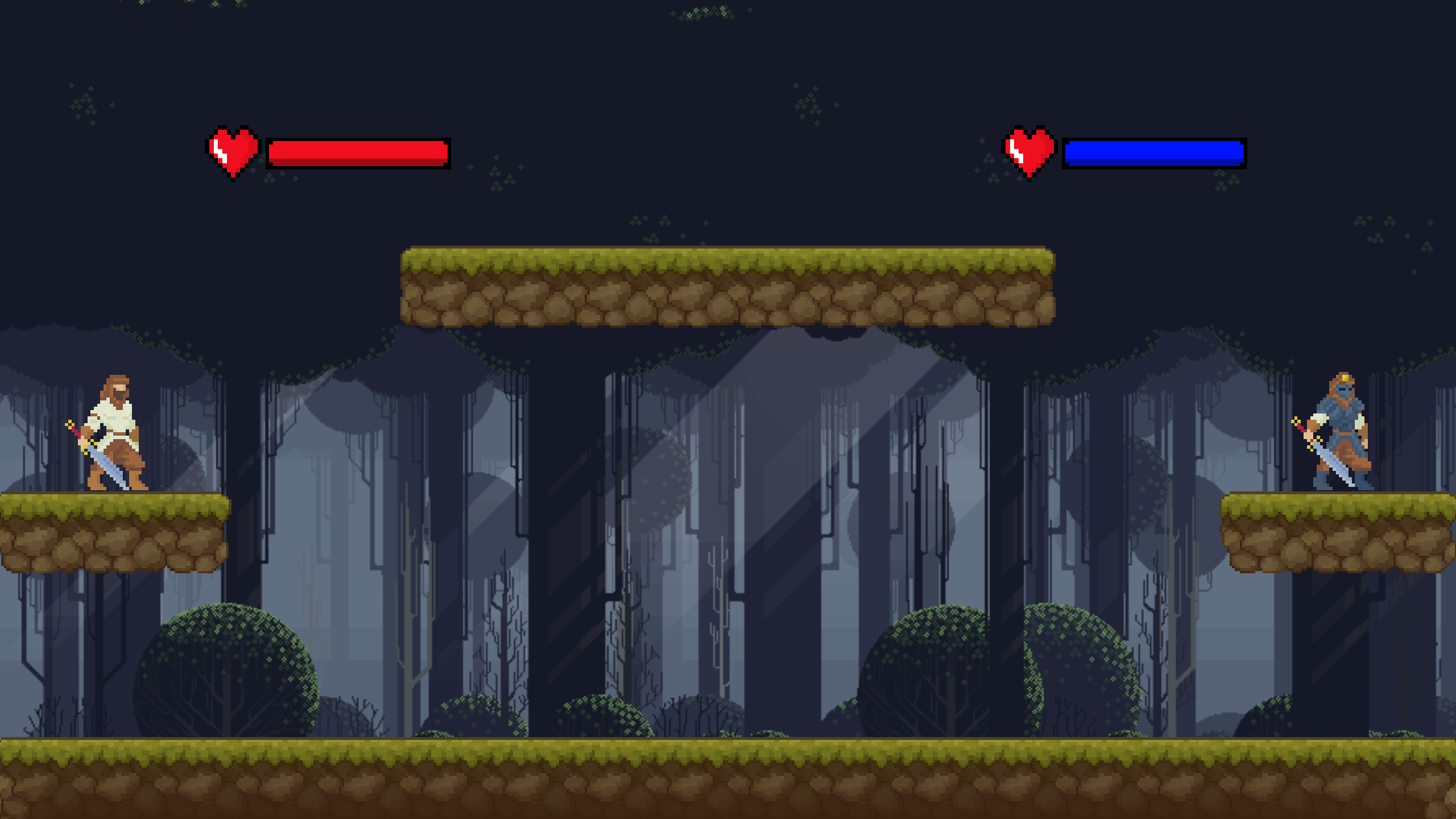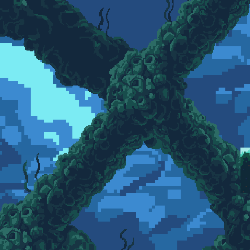
 The development process of Final Fight was within a couple of months. It started off with nailing down the type of game I wanted to make. Since I've always been interested in fighting games, particularly Super Smash Bros., I wanted to develop a game that had a similar aesthetic and feel. To accomplish that, I took a simple approach as to keep within the small scope of the project. Having a smaller project scope also allowed me to learn many of the fundamentals in both game development and game design, as this was my first project. With that, I knew I wanted to make it 2D sprite-based game as that what I was most familiar with, but also fit with the style that I was going for. I then started doing research on how to develop, design, and create a simple platformer game, just as a base to build from. After figuring out what sort of game I wanted to create and having tested the base platformer game, I took it upon myself to familiarize myself more with the Unity 2D engine and ways I can utilize it. This is where I self-taught myself some fundamentals of Unity 2D. Using the base platformer, I learned and understood the physics engine and tweaked it to what fit best for a platform fighter. I made it a bit floatier while keeping with the faster pace of the fighting game genre. I then moved onto the attacking, which was barebones for this project, as the characters only have one attack. Setting up hitboxes, instancing damage areas to match with the swing animation, UI/UX, and developing an HP system were all part of my learning experience.
The development process of Final Fight was within a couple of months. It started off with nailing down the type of game I wanted to make. Since I've always been interested in fighting games, particularly Super Smash Bros., I wanted to develop a game that had a similar aesthetic and feel. To accomplish that, I took a simple approach as to keep within the small scope of the project. Having a smaller project scope also allowed me to learn many of the fundamentals in both game development and game design, as this was my first project. With that, I knew I wanted to make it 2D sprite-based game as that what I was most familiar with, but also fit with the style that I was going for. I then started doing research on how to develop, design, and create a simple platformer game, just as a base to build from. After figuring out what sort of game I wanted to create and having tested the base platformer game, I took it upon myself to familiarize myself more with the Unity 2D engine and ways I can utilize it. This is where I self-taught myself some fundamentals of Unity 2D. Using the base platformer, I learned and understood the physics engine and tweaked it to what fit best for a platform fighter. I made it a bit floatier while keeping with the faster pace of the fighting game genre. I then moved onto the attacking, which was barebones for this project, as the characters only have one attack. Setting up hitboxes, instancing damage areas to match with the swing animation, UI/UX, and developing an HP system were all part of my learning experience.
 One of the most exciting parts of development was the level design. I wanted each level to feel different, as well as match the aesthetic and theme of each one. The first level, the forest level, was a level I had in mind as a starter level. It was going to be as neutral as possible without anything crazy. The level design was like that of Battlefield from Super Smash Bros., it’s an iconic level that is designed to be as a starter for any player or character. With the base level out of the way, I wanted to experiment a bit on two different fronts with the other levels, on the theme/art of the level, and the actual level design. The city level, my second level, was my take on changing up the theme and art a bit and having something that felt different from the other levels. I did change the map design somewhat, but overall, the feel of the level was very similar to the forest. The final level, the ocean level, was my most radically changed level. In this one, I wanted to change everything, from the level design to the art. I was set on an underwater ocean styled level as it felt the most interesting, and not particularly common, place to hand a fighting game. The level layout was also drastically different, where instead of being Battlefield inspired, I took an approach that seemed fun for both players. I wanted to make the level has a center area where the players have constant battles or control of the area. As well as platforms for them to retreat to or make outplays in. It is also an asymmetrical map, so the playstyle will feel a bit more unique than the others.
One of the most exciting parts of development was the level design. I wanted each level to feel different, as well as match the aesthetic and theme of each one. The first level, the forest level, was a level I had in mind as a starter level. It was going to be as neutral as possible without anything crazy. The level design was like that of Battlefield from Super Smash Bros., it’s an iconic level that is designed to be as a starter for any player or character. With the base level out of the way, I wanted to experiment a bit on two different fronts with the other levels, on the theme/art of the level, and the actual level design. The city level, my second level, was my take on changing up the theme and art a bit and having something that felt different from the other levels. I did change the map design somewhat, but overall, the feel of the level was very similar to the forest. The final level, the ocean level, was my most radically changed level. In this one, I wanted to change everything, from the level design to the art. I was set on an underwater ocean styled level as it felt the most interesting, and not particularly common, place to hand a fighting game. The level layout was also drastically different, where instead of being Battlefield inspired, I took an approach that seemed fun for both players. I wanted to make the level has a center area where the players have constant battles or control of the area. As well as platforms for them to retreat to or make outplays in. It is also an asymmetrical map, so the playstyle will feel a bit more unique than the others.
Ending Thoughts
 Although I felt extremely proud of the levels, there were some areas in which there is room for improvement. Some game mechanic systems, like a time limit or special moves, would’ve helped make the game feel a lot more unique. I also did not get to implement sound design in the game as the deadline was too close for it. Finally, as this was my first-time using animation in Unity, I encountered many weird bugs, including where all the animations would play backwards for the second player. This game was a big learning experience for getting me familiar with Unity and game development as whole. I learned about how to pace myself and what to focus on when a timeline and project scope is required, which carried into my future projects.
Although I felt extremely proud of the levels, there were some areas in which there is room for improvement. Some game mechanic systems, like a time limit or special moves, would’ve helped make the game feel a lot more unique. I also did not get to implement sound design in the game as the deadline was too close for it. Finally, as this was my first-time using animation in Unity, I encountered many weird bugs, including where all the animations would play backwards for the second player. This game was a big learning experience for getting me familiar with Unity and game development as whole. I learned about how to pace myself and what to focus on when a timeline and project scope is required, which carried into my future projects.